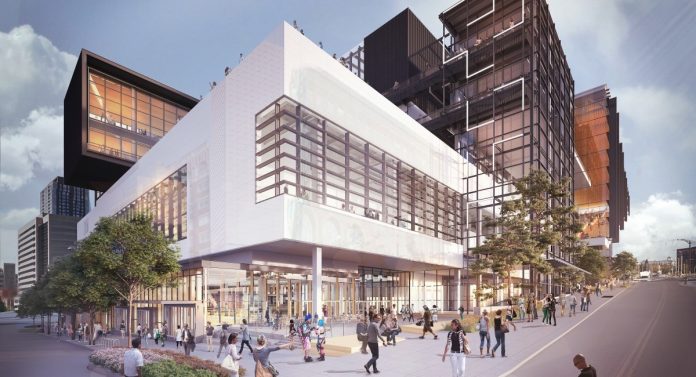On Tuesday morning, the members of the Washington State Convention Center (WSCC) Addition Board gathered within the convention center they hope to supplement to get updated on the $1.6 billion expansion project. Matt Griffin, managing partner at Pine Street Group, said the WSCC Addition, despite a few unforeseen hurdles, is still on schedule and expected to begin construction in October.
On March 16th, the Seattle Design Commission granted the WSCC Addition an urban design merit recommendation with conditions, clearing a hurdle for the project. However, another public benefits hearing awaits on April 20th that has the potential to trip up the projects if the WSCC tries to lowball the City and community stakeholders, neither of whom were impressed at the first hearing. And, of course, the Seattle City Council still needs to sign off on the street vacations. Nonetheless, Griffin has a point that it appears the WSCC powerbrokers find the seas parting before them in their quest to reach the promised land of building a really big convention center.
Closing “Loophole” To Tax Small Hotels
Griffin told the board that the WSCC’s financial plan should be okay, although the contingency fund has shrunk to $40 million. Notably, the financial plan counts on the State Legislature closing a “loophole” that excludes hotels with fewer than 60 units from Seattle’s 7% lodging tax that funds the WSCC. “Without the change, we are $175 million to $200 million shy,” Griffin said. It seemed that Griffin believed that legislative change would allow the WSCC to apply the hotel tax to hosts using services like AirBnB.
The erosion of expected hotel tax revenue largely caused the strain on the budget, Griffin argued, and he pointed to AirBnB and Home Away as likely culprits for the “leakage.” “The piece that we are missing is projected in those areas,” Griffin said. Griffin’s hypothesis has scant evidence to support it. As David Dahl pointed out in his critique of the WSCC Addition, Downtown Seattle hotels occupancy levels have climbed to record rates–84% in 2016–despite dwindling out-of-state attendance at the WSCC, which is the supposed driver of hotel occupancy according to the logic of the WSCC expansion. With downtown hotel occupancy at record highs, how can we explain lower than projected hotel tax revenue other than the projections were bad? Perhaps their projections assumed more hotels would be built and they now blame AirBnB for dampening hotel growth. Contrarily, a 2008 recession-induced lull is rebounding with a vengeance, and the Downtown Seattle Association expects 3,000 new Downtown hotel rooms by 2018.
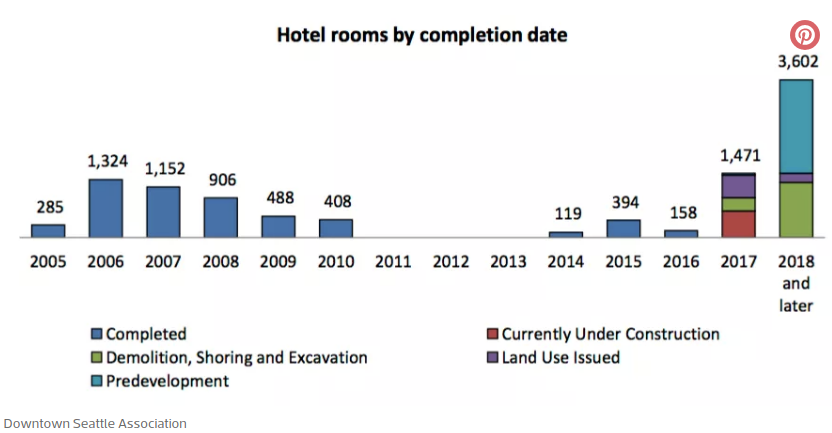
Moreover, some early research has suggested services like AirBnB mostly create their own market rather than pilfering from hotels. That may change as AirBnB and other short-term rental services grow–and they are growing at a breakneck pace in Seattle–but the WSCC would seem to be not just scapegoating but flat wrong if they’re blaming short-term rentals for lower than projected hotel tax revenues at this juncture. Hotel occupancy levels are too high and AirBnB is too new of a phenomenon to be blamed for the slow growth of hotel rooms earlier this decade.
Public Benefits As “Entitlements”
Another area where the budget may grow is public benefits, and the project’s masterminds alluded to the push for a larger benefits package. The project planners and the board used the term “entitlements” to refer to the benefits, seeming to suggest the community was being entitled for asking for them. Meanwhile, the Community Package Coalition has argued the big scope of the $1.6 billion project with numerous impacts and street vacations naturally comes with the need for commensurate benefit.
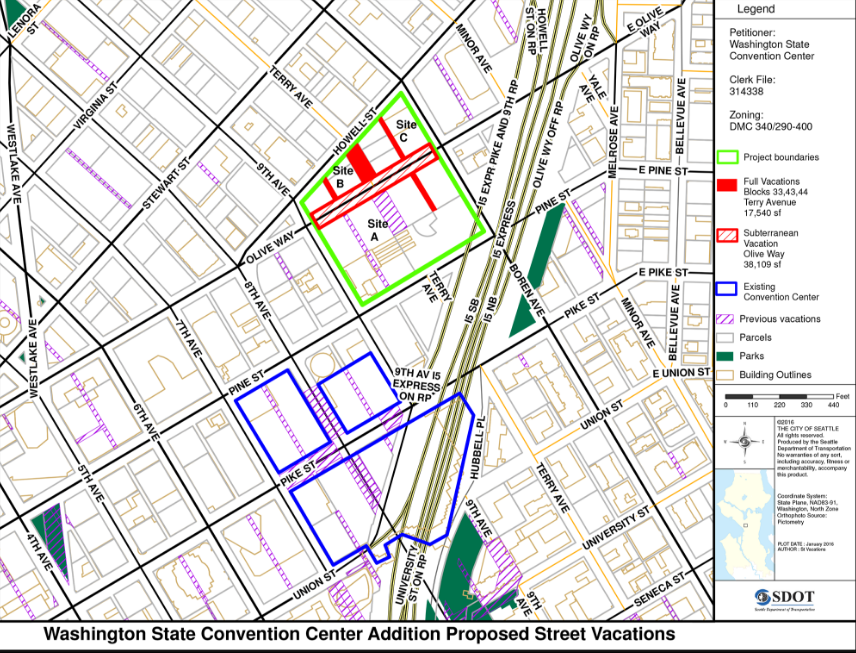
“The public wants $63 million to accomplish objectives of Pike/Pine corridor,” said WSCC Board of Directors Chair Frank Finneran. The latest ask from the Community Benefits Coalition has been for $79 million, in fact, and the coalition member Scott Bonjukian said the precise figure is in flux as the full impact of the addition is determined. Later Finneran added that the Seattle Design Commission has begun focusing on the art “more than normal.”
“Everybody wants to tell us what to do,” Finneran said to some exasperated chuckling. He added, “We got to get out of [the Seattle Design Commission] or we’ll be there for the rest of our natural-born lives.”
Griffin repeated his analogy to the Amazon headquarters project and wanting the public benefits to be similar in nature to Amazon’s three-block project, which offered about $25 million in benefits. The Community Package Coalition doesn’t agree this is the right analogy; Amazon was a private sector project and the WSCC is a public facilities district running on its own personal stream of public revenue. The WSCC is also asking for more extensive alley vacations–totaling 55,649 square feet by SDOT’s accounting–compared to Amazon’s roughly 17,000 square feet of vacation in its three-block development.
Budget Trimming
Where would the extra 40 to 60 million dollars the Community Package Coalition is demanding come from? It could be that the WSCC thinks it will win the argument and not need to offer that many benefits. Even so, the meeting included discussion of budget trimming areas. Pine Street Group’s Matt Rosauer said developers working closing with LMN Architects may have saved about $30 million in cost in the last four weeks, apparently by fine-tuning the plan. Going forward, Rosauer also offered the example of cutting expensive wood paneling if it’s 40 feet in the air where nobody will notice it anyway.
Unlimited Parking
One area where developers opted not to trim costs was parking for construction workers. Rosauer the terms of the project labor agreement with the Seattle Building and Construction Trades Council are settled upon and should be finalized within a few weeks. One area that proved a non-negotiable was free parking. Rosauer said that the building trades unions insisted on it and suggested it was wise to acquiesce to close the labor deal. The developers expect more than 1,000 workers on-site at peak times, and plan to accommodate some though not all in the WSCC’s parking garage. WSCC President Jeff Blosser said the garage has 1,500 stalls with 300 to 350 typically available. Griffin suggested they’d have to study what’s the best financial use of the WSCC garage: shifting out existing customers to meet parking obligations to the construction workers or reimbursing construction workers to park elsewhere.
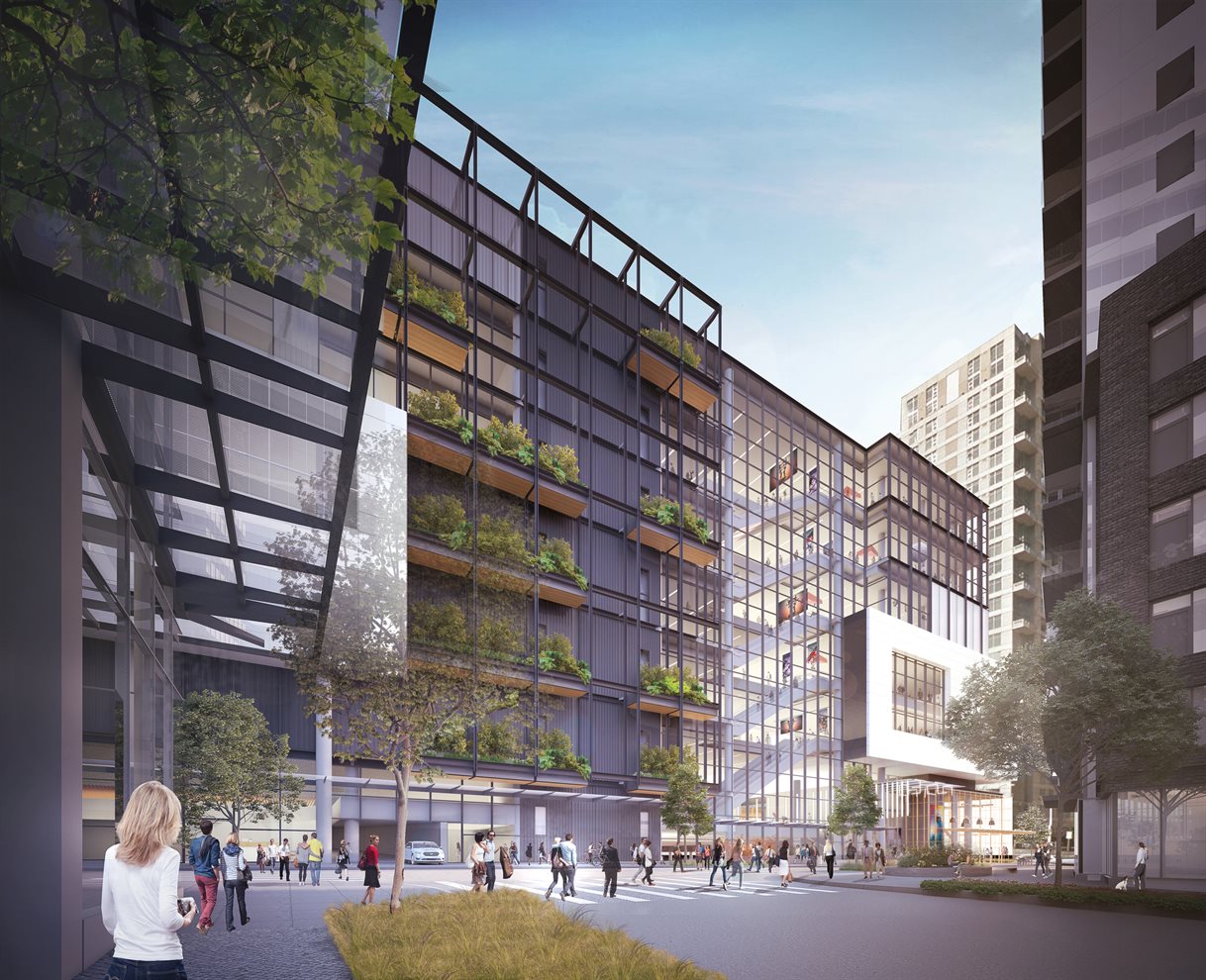
WSCC Board of Directors Vice Chair Deryl Brown-Archie asked if the contract included a not-to-exceed number for parking. Rosauer said no; the building trades were adamant on this point to sign the project labor agreement. Exactly how many spots would be needed wasn’t clear. “How many carpool and use mass transit?” Griffin mused. He added that they would incentivize and drive mass transit use but didn’t offer specifics. With parking reimbursements maxing out at $20 per day in typical contracts, it seemed fully subsidizing an ORCA card would be a net winner for the WSCC.
Labor Goals
The WSCC has set some goals for the hiring of the large workforce that will build the addition.
“This is the biggest job in the city, and it’s already a busy construction market,” Rosauer said. “So one of the keys was can we get workers and can we get apprentices?”
The developer has set a goal of 15% apprentices and a workforce including 15% minorities and at least 8% women, Rosauer said. (Side note: the 19 stakeholders gathered around the board table Tuesday included just one person of color.)
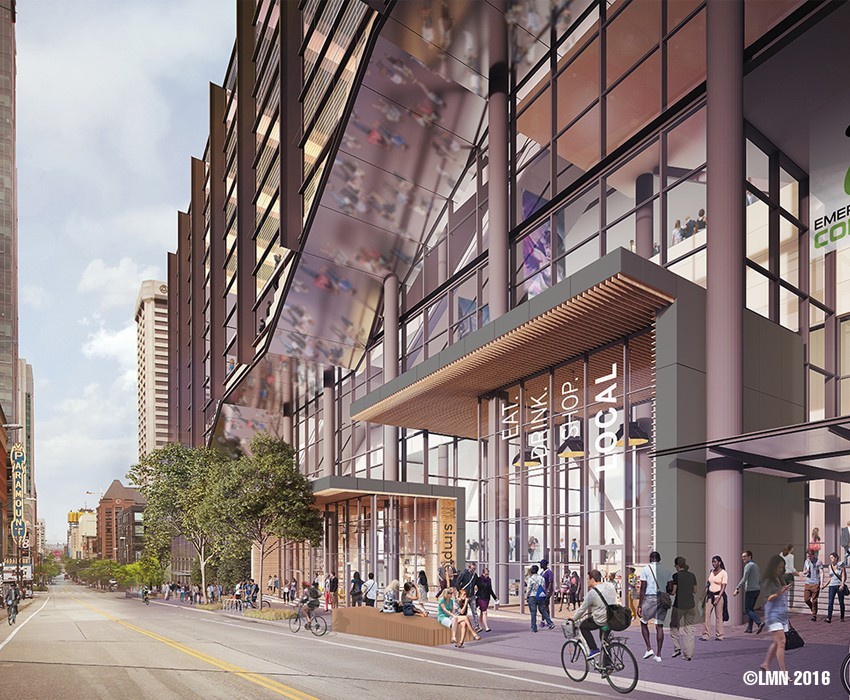
Griffin said the construction market remains “pretty hot” meaning labor costs are high, but also suggested the project should seek to capitalize on low interest rates; an interest rate hike could cost the project $20 million, he said. In his op-ed, David Dahl argued by adding an enormous project in the midst of Seattle huge building boom, the WSCC may juice labor costs even more, leading housing costs to rise region-wide which would exacerbate the affordability crisis. The apprentice program could be seen as the WSCC’s effort to train new workers to grow Seattle’s construction workforce, helping to relieve the labor shortage–in time anyway. Whether they’ll be able to meet their ambitious 15% apprentices goal remains to be seen.
Finneran said approving the contract would cement trade union support for the WSCC Addition. After some discussion, the WSCC Addition Board voted to approve moving forward with the project labor agreement, putting the ball in the court of building trades leaders.
Loose Ends
One of the loose ends that the WSCC needs to tie up is the King County Councilmembers approving the Convention Place Station sale, although Executive Dow Constantine’s strong support for the land sale could go along way to convincing a majority. Another loose end is winning support from the Seattle Design Commission for its public benefits package. The 9am meeting at City Hall Room L280 on April 20th will reveal how far the WSCC has progressed in winning over the City of Seattle and the nine organizations making up the Community Package Coalition. Meanwhile, the coalition is circulating a petition to build support for boosting the benefits.
King County Set To Part With Convention Place Station for $161 Million
Doug Trumm is publisher of The Urbanist. An Urbanist writer since 2015, he dreams of pedestrian streets, bus lanes, and a mass-timber building spree to end our housing crisis. He graduated from the Evans School of Public Policy and Governance at the University of Washington in 2019. He lives in Seattle's Fremont neighborhood and loves to explore the city by foot and by bike.

